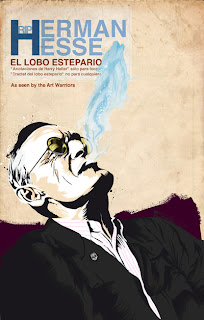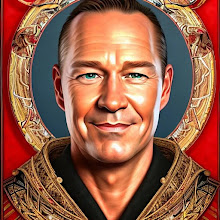(Hermann Hesse in his "Life Story Briefly Told")
Hesse's first major breakthrough as a writer came with the novel Peter Camenzind in 1904, which was followed by Unterm Rad, a book teeming with autobiographical references that remains one of his most important works even today.
With books such as Der Steppenwolf, Siddhartha, and, of course, the later work, Das Glasperlenspiel, Hesse secured himself a firm place in the history of world literature. In 1946, he was awarded the Nobel Prize for Literature. Even during his own lifetime, his works had already been translated into all of the world's major languages. Yet only in the past thirty years have his works generated a response unlike that given to those of any other writer in the history of German literature. Hesse is generally considered to be the most translated German author since the Brothers Grimm.
In America and Asia in particular, he has millions of readers. Worldwide, over 100 million copies of his books - now translated into close on 60 languages - have been published, with German-language editions accounting for just under a quarter of this figure. Even today, Suhrkamp Verlag produces 30,000 copies of books by Hesse each month.
Hesse is a source of great fascination for each new generation, and younger readers, in particular, see his books as a challenge enabling them to examine their own identity and the eternally relevant question of the meaning of life. In an age of increasing disorientation, Hesse's oeuvre combines ethics and aesthetics, tradition and modernity, with an open and forward-looking view of the world.
Biography
Throughout his life, Hermann Hesse was a seeker. This is reflected not only in his outstanding literary works, which in 1946 won him the Nobel Prize, but also in his resume.
In his home town of Calw, where he was born on July 2, 1877, he spent his youth in the bosom of his family - formative years that found their way into many of his books. Maulbronn, Tübingen and Basel were among the other places Hesse lived. In 1904, he moved to an old farmhouse in Gaienhofen on Lake Constance to embark on a career as a freelance writer.
In 1911, he made a journey to India, and moved to Switzerland a short time later, living first in Berne and later in Montagnola (Tessin), where he entered his most prolific period as a writer, and where he also died in 1962.
The task of overcoming personal crises is one of the defining elements of Hesse's work, though other issues such as religion and politics also feature prominently.
Hermann Hesse`s works



2 comments:
“There is no reality except the one contained within us. That is why so many people live such an unreal life. They take the images outside of them for reality and never allow the world within to assert itself.” — Herman Hesse
“The prettiest and most interesting things are the very ones that cannot be known or explained.” — Hermann Hesse
Post a Comment